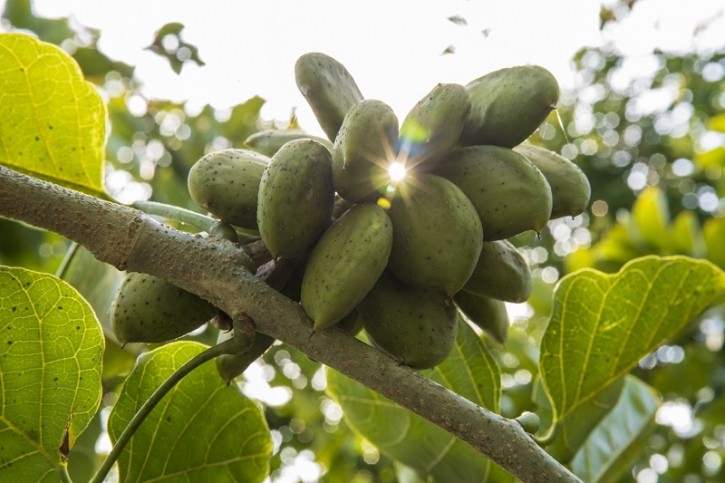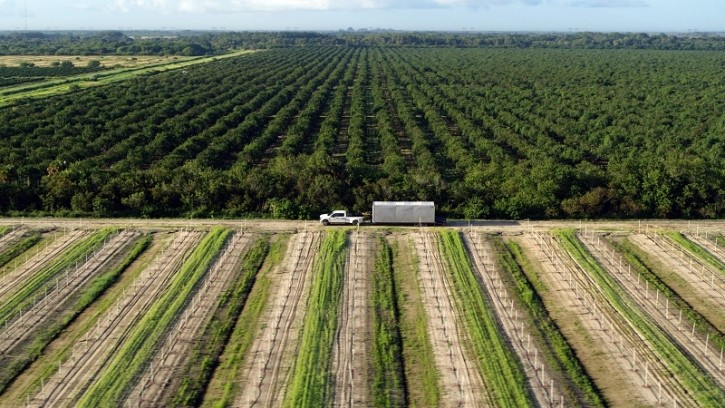‘We want to make it the 21st century’s great crop’: Why Terviva aims to plant 200 million pongamia trees in the next 10 years

This subtropical legume tree is blessed with unique qualities that make it well suited to a climate-changing world, the company believes.
It has already planted tens of thousands of pongamia trees in Hawaii and Florida and has begun planting projects in India. Its goal is to plant 200 million over the next decade. The company told AgTechNavigator it has developed a sustainable, market-driven approach for farmers to profit off marginal land by cultivating pongamia trees.
What’s in it for the growers?
Since forming in 2010, the company has created a supply chain from which it harvests and transforms pongamia beans into three income streams: bioenergy, food ingredients (sold via its Ponova brand) and animal feed.
Farmers, ranchers, and forest landowners could also potentially generate carbon credits from growing pongamia.
“Pongamia is a hardy, climate friendly crop which can be grown on marginal land,” said Terviva’s co-founder and chief development officer Sudhir Rani. “The demand for food, fuel and feed keeps growing and we think this is a good crop for that.”
Pongamia is an environmentally sustainable tree crop that adds nitrogen to the soil, stores carbon, requires little to no fertiliser or pesticides, and does not require tilling, he told us.
Native bees and other pollinators thrive on the pongamia tree’s flowers, thereby supporting local biodiversity.
Pongamia has earned the moniker: ‘vertical soy’. From one acre, Terviva’s pongamia trees can potentially provide the same amount of oil from four acres of US soybeans, Rani claimed.
Convincing the farmers and land managers to plant pongamia
Pongamia is well suited to grow on marginal land, the co-founder argued. “We define marginal land as farmland that's experiencing some sort of ecological or financial stress,” he explained. “About a million acres of citrus has come out of production in Florida because of the ecological climate affects as well as the financial stress of competing across the world,” he claimed. Sugar cane in Hawaii has been lost for the same reasons, he lamented.
“Our focus is on those types of marginal land where we can incentivise farmers growing pongamia for three reasons: 1) higher income 2) diversification 3) risk management. You saw what happened in Maui [referring to the 2023 Hawaii wildfires] – a lot of that land was former active sugar cane land that’s been out of production for years. That led to invasive species taking over that are much more fire prone. This is a story that's happening around the world, so the work in process is identifying the marginal land and convincing the farmers and land managers to plant pongamia.”

The high priority locations for planting are Florida, Australia, and India. In the case of Florida, 12 commercial growers have been drawn to pongamia, Rani revealed. “These are large and medium-sized farmers that were traditionally in citrus. When the citrus died, they had to remove those acres because it had disease. They were left holding that land and either you ranch cattle on it (which is a low-income proposition) or you look for other alternative crops, and mainline cash crops like soy and corn and cotton are oil palm or avocados don't necessarily grow well on this land. They've been looking for alternative crops to rotate into - pongamia works well.”
The new biofuel alternative?
Terviva has so far attracted $100 million in funding. It has also attracted energy giant Mitsubishi Corporation (MC), which has decided to back the production of crude pongamia oil as biofuel feedstock.
A recently revealed partnership – which also sees MC provide financing to Terviva – will see the companies bring crude pongamia oil to the liquid fuels market as a first-of-its-kind of biofuel feedstock. Crude pongamia oil is a second-generation feedstock with a low carbon intensity score produced through a sustainable and transparent supply chain, according to the companies.
The oil is ISCC Plus & EU Certified and the wild harvest supply chain and crush production meet RED II and global sustainability criteria. Combined, these accolades make Terviva’s crude pongamia oil among the most sustainable feedstocks, with a similar carbon intensity to used cooking oil.
Potential to be a ‘transformational crop’
"Addressing climate change and reducing GHG emissions with the aim of contributing to achieve a decarbonised circular society are our high-priority initiatives,” an MC spokesperson said.
“The pongamia tree can be a transformational crop to realise a carbon-neutral and sustainable society. With its strong intellectual property and existing operations, Terviva has exceptional potential to be a business that significantly benefits the environment and local communities who engage in the supply chain of pongamia.”
“With MC by our side,” Rani added, “Terviva can focus on what we do best: creating elite cultivars to get higher yields and superior products from the pongamia tree, supporting local communities where the tree grows, and applying our patented processes to making the oils and meal into ultra-high quality biofuel feedstocks, animal feeds and ultimately food.”




